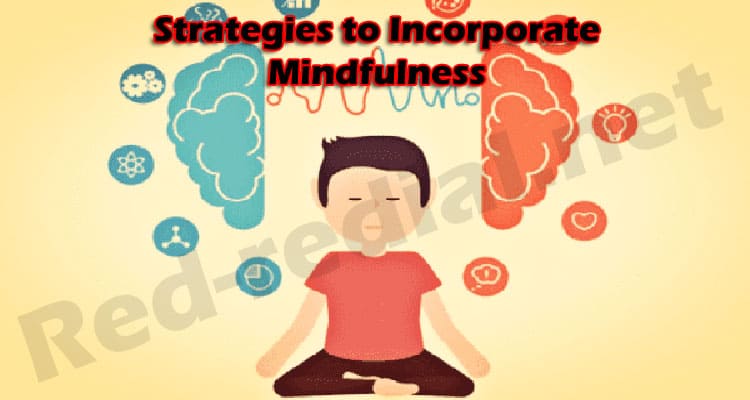Strategies to Incorporate Mindfulness in Your Classroom Curriculum
Strategies to Incorporate Mindfulness – Since ancient times humans have realized the power of staying alert, living in the moment and how these practices enhance our performance and success in our lives. Mindfulness is the practice of staying alert, being aware and ever present in the moment. It involves relaxing one’s body, spirit and mind to improve their focus and mood.
We live in a turbulent world. Due to the rigors of modern lives, we all experience some form of stress or anxiety on a daily basis. The life of a student is equally stressful if not more than adults. The burden of studies coupled with high expectations from parents, teachers and friends can be stressful for the students. Nowadays, schools are doing just about everything to make teaching, learning and management more efficient.
From smart classes to LMS, ERP and likewise, there are a myriad of tools available to make teaching more efficient and effective. However, it is equally important to ensure that our students are in the right frame of mind which is conducive to learning. This is where incorporating mindfulness in your classroom can help you reap dividends. Mindfulness not only enhances the attention span and learning skills of the students, but it also improves their Emotional Quotient and social skills. Here are a few strategies to incorporate mindfulness in your classroom which will ensure that your students make full use of their brainpower to realize their potential….
Mindfulness strategies suitable for Elementary Classes-
A great way of introducing elementary school students to mindfulness is practicing a technique known as breath control. As any good book on meditation and mindfulness will tell you, the first and foremost step towards getting good at meditation is getting a hang of breath control.
Learning proper breath control can make learning advanced mindfulness techniques simpler and straightforward. Educators can ask the students to count to three while inhaling and again while exhaling. Alternatively, teachers can ask the students to inflate their stomachs like a balloon or picture their lungs expanding and contracting with each breath, quite similar to a Hoberman sphere.
Group projects and mindfulness routines managed by students themselves are yet another option for the educators. Even listening to soothing and relaxing melodies, going on a trip outside the classroom, storytelling and likewise can be mindfulness inducing experiences for young students.
Mindfulness strategies suitable for Middle Classes-
Teaching the students to transition calmly, or observing themselves while sitting in the classroom in order to calm themselves and learning how to connect physically with their surroundings are great strategies to teach mindfulness to middle school students.
Providing students with the opportunity to reflect on various things by assigning each student some points they can ponder over is yet another effective method of introducing mindfulness to middle school students. Educators can also employ the help of various apps and digital tools for teaching mindfulness to students in this age group. In this way, students are free to practice mindfulness at their own time after the school hours. Moreover, this also helps students to customize their learning experiences and choose the ones which reflect their requirements and interests.
Mindfulness strategies suitable for upper classes and college students-
Meditation is a very useful practice which can be used for teaching mindfulness to students of this age group. Apart from traditional meditation techniques, there are many variations which can be integrated easily even into a very busy schedule such as body-scan or walking meditation. If you are a student who is often stressed out and is especially prone to exam-related anxiety, target mindfulness techniques can be particularly helpful for you. A simple example is curling and uncurling one finger with each breath. Many mindfulness techniques can be practiced anywhere and at any time. For instance, during a class you can practice mindfulness techniques by keeping quiet, observing your breath and being in the moment and watching your thoughts without judgement.
In the words of the legend Bruce Lee, “The successful warrior is the average man, with laser-like focus.” Well, the life of a student is similar to a warrior in many ways and mindfulness in the classroom helps the student achieve that laser-like focus and reduce anxiety and stress. Therefore, educators must encourage their students to practice mindfulness in the classroom in order to help them succeed academically as well as socially.




